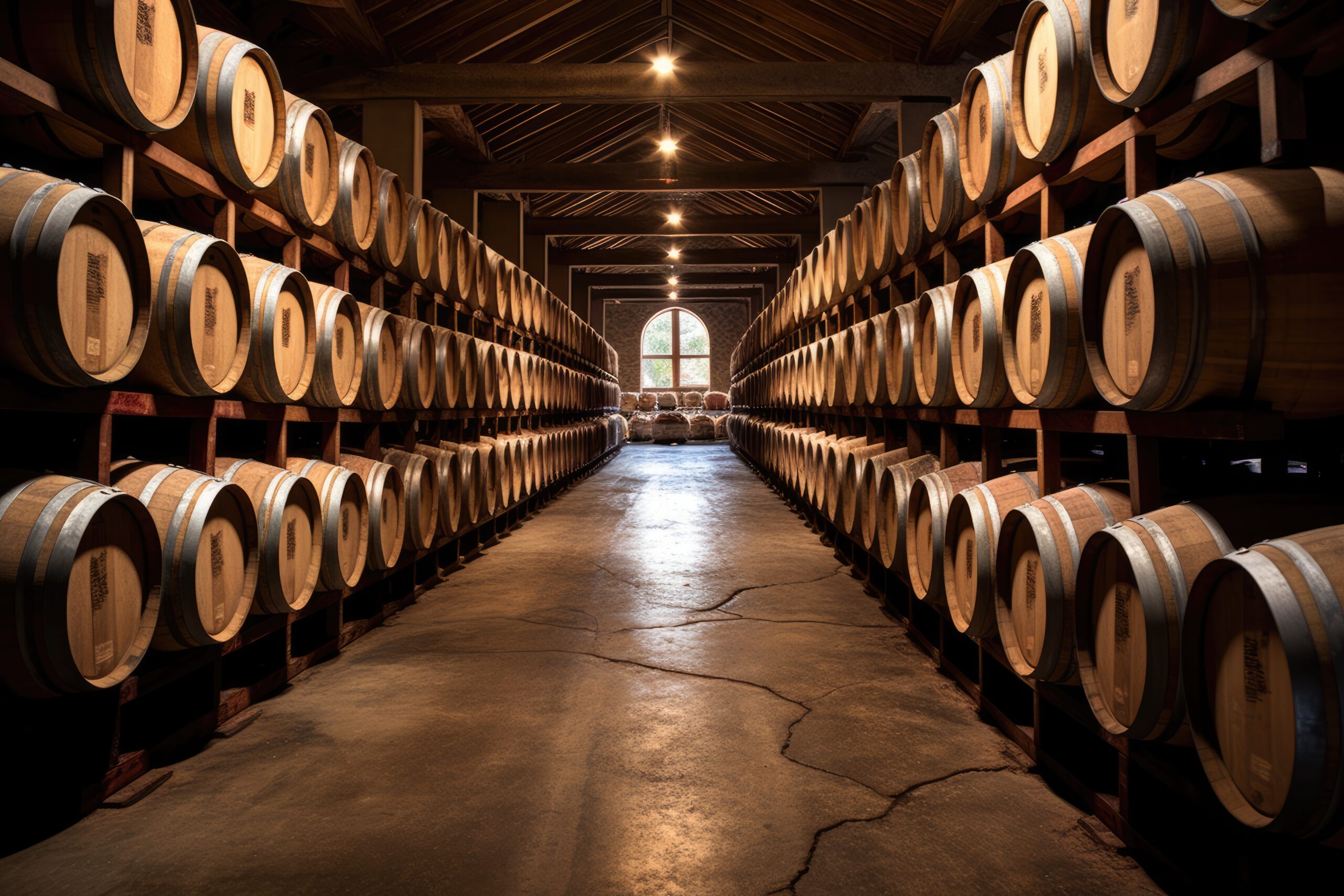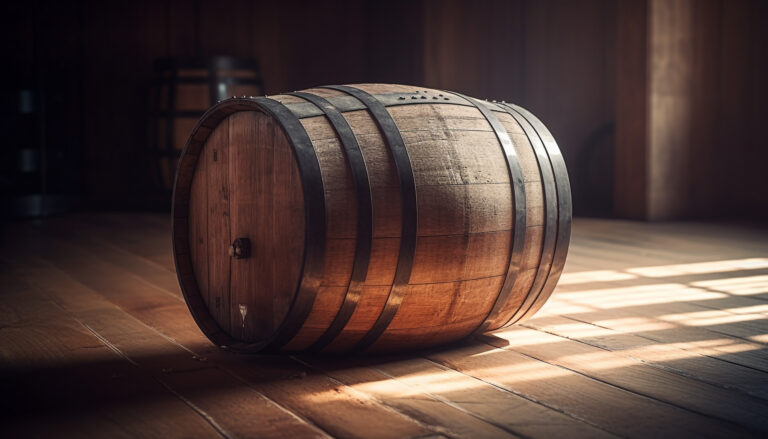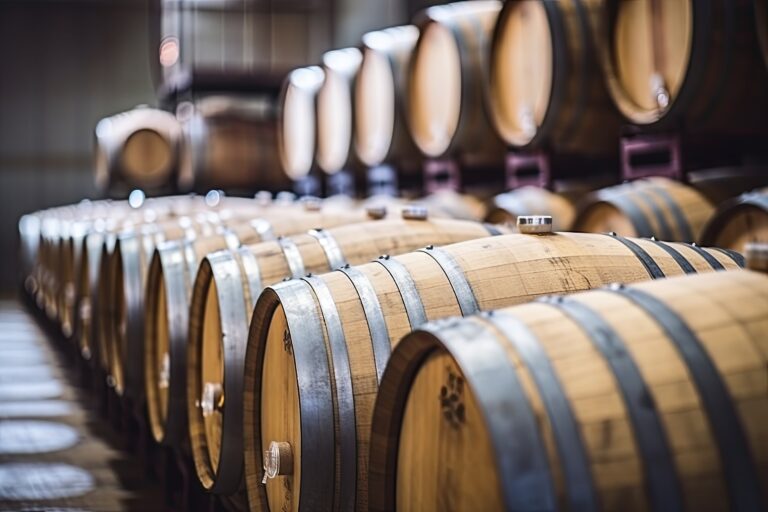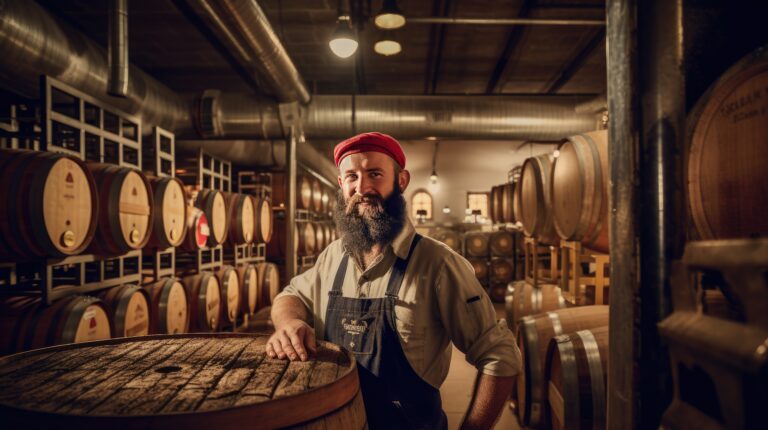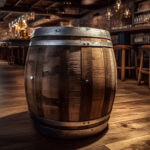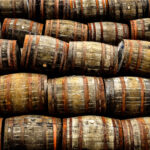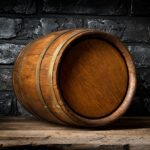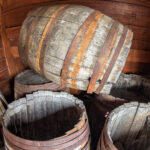Why is whiskey aged in wooden barrels? It’s a question that unlocks a fascinating journey through history and craftsmanship. When you savor a glass of whiskey – be it bourbon, scotch, or rye – you’re experiencing a spirit meticulously shaped and mellowed over years of barrel aging. This process is what gives whiskey its signature amber hue and those delightful oaky, vanilla notes. The wooden barrels “breathe,” allowing the whiskey inside to undergo gradual oxidation and evaporation. This tames the harsher, fiery edges of the spirit, resulting in a smoother, more complex flavor profile. Barrel aging is a true art, with distillers carefully choosing barrels and determining the ideal aging time to develop each whiskey’s unique character. So, next time you raise your glass, take a moment to appreciate the skill and dedication behind that smooth, fragrant dram. Barrel aging: it’s the key ingredient that elevates whiskey from good to great.
The History of Barrel Aging for Whiskey
Barrel aging is an ancient practice, stretching back centuries. Originally, distillers stored whiskey in barrels out of pure necessity – storage and transport options were limited. They quickly discovered, however, that storing whiskey in charred oak barrels dramatically improved both its flavor and color.
Today, barrel aging is a fundamental step in producing most whiskeys. The barrels contribute distinctive aromas and flavors to the spirit. As the whiskey interacts with the wood, compounds responsible for flavor and color are extracted. The charred inner layer of the barrel also acts as a natural filter.
The type of barrel and the length of aging significantly impact a whiskey’s character. Bourbon, for example, must be aged in new charred oak barrels, typically for 2-4 years. Scotch whisky, on the other hand, often uses aged barrels, sometimes for much longer periods. The barrel’s previous contents, like sherry or port, also leave their mark on the whiskey’s flavor.
The climate where the whiskey is aged also plays a role. Colder climates result in slower aging, while warmer climates accelerate the process. Barrel aging is a blend of science and intuition, requiring expert blending to create a truly exceptional whiskey. The barrel’s contribution to a whiskey’s distinctive taste and aroma is a time-honored tradition that continues to this day.
The Chemical Reasons Wood Barrels Enhance Whiskey
The aging process is critical for transforming distilled spirits into the smooth, complex drink we know as whiskey. Inside charred oak barrels, a series of chemical reactions occur, giving whiskey its characteristic amber color and rich flavors.
Wood barrels, particularly those made of American white oak, are ideal for aging whiskey. The charred interior offers a larger surface area for interaction, and the porous wood allows for gentle oxidation, which helps mellow the spirit.
The whiskey also extracts various compounds from the wood, adding both color and flavor. Lignins break down into vanillin, providing those lovely vanilla notes. Tannins contribute a subtle bitterness. Hemicellulose caramelizes, imparting hints of toffee or butterscotch.
The longer a whiskey ages, the more complex its flavor profile becomes. Over time, the harsh alcoholic edge softens, and the whiskey develops a smoother, fuller body. It’s a delicate balance, though. Too much time in the barrel can lead to an over-oaked whiskey with astringent, woody flavors.
Master distillers carefully monitor the whiskey’s maturation, determining the perfect moment for bottling. They aim for a harmonious blend of distinct wood flavors that complement the spirit’s natural aroma and taste. The result, after years of patience, is a whiskey as nuanced and storied as the wood it aged in.
How the Toasting Process Impacts Flavor
The toasting process is essential for developing the flavors in aged whiskeys. As barrels are charred, the wood sugars caramelize, creating a layer of char.
During aging, the spirit absorbs flavors from the wood, such as vanilla, caramel, and oak. The char layer acts as a filter, mellowing the whiskey by absorbing some of the harsher compounds from the distillate. This is what gives aged whiskeys their signature smooth, mellow taste.
The level of char influences how much flavor is imparted to the whiskey. Lightly toasted barrels produce more subtle flavors, while heavily charred barrels contribute darker, richer notes. Master distillers carefully control the toasting process to achieve their desired flavor profile.
Some distilleries reuse barrels for aging, as subsequent uses continue to add complexity. Bourbon barrels are often used to age Scotch and Irish whiskeys, although some distilleries prefer new barrels for a more pronounced wood influence.
Ultimately, aging whiskey in charred oak barrels is an art. Distillers rely on years of experience to extract the best flavors from the wood. Patiently waiting as the spirit matures allows the wood and whiskey to work their magic, creating a symphony of aroma and taste that defines an exceptional aged spirit.
The Importance of Char Levels in Barrels
The char level inside the barrels plays a significant role in aging whiskey. As the whiskey interacts with the barrel, compounds from the wood infuse the spirit with flavor. The charred layer acts as a filter.
Barrels are charred by burning the inside before filling them with whiskey. Flames create different levels of char, depending on how long the wood is burned. Longer burning times result in a darker, thicker char. Common char levels for bourbon barrels are #3 and #4, with #4 being the darkest.
The char layer impacts the aged whiskey’s flavor. As the whiskey penetrates the char, it filters out certain compounds while allowing others to pass through. Darker char levels lead to more robust flavors. Bourbon often uses heavily charred barrels to impart strong oak, caramel, and vanilla notes. Lighter char levels, like those used for Scotch, allow more subtle flavors to emerge.
The char level significantly influences a whiskey’s flavor profile. Master distillers carefully select char levels based on the desired style. Whether the goal is a bold, robust whiskey or a light, fruity one, char levels help shape the final product. This age-old practice has an irreplaceable effect on aged spirits.
Why Certain Wood Types Are Preferred for Whiskey Barrels
Wood barrels have been used for aging and storing whiskey for centuries. Certain woods are better suited for this purpose. Oak, especially American white oak, is the top choice.
Oak barrels impart a distinct flavor to the aging whiskey. The oak contains aromatic compounds that seep into the whiskey, adding vanilla and caramel notes. Oak is also porous enough to allow for slight oxidation and evaporation, which contributes to the whiskey’s complex flavor development.
American white oak, in particular, has the ideal characteristics. Its tight grain and medium porosity prevent excessive liquid loss. White oak also contains more of the flavorful compounds that give whiskey its sweet, smoky character. The traditional charring process further enhances these flavors.
Other woods, like hickory, ash, and maple, have been used, but they lack oak’s ideal properties for mellowing and maturing whiskey during long aging periods. While aging whiskey in alternative wood barrels might be an interesting experiment, whiskey connoisseurs generally prefer the classic flavor that only oak barrels can provide.
Centuries of whiskey-making tradition have proven that oak, especially American white oak, is simply the best for barrel aging. The distinctive and delicious flavors that emerge after years of oak barrel maturation are what give fine whiskeys their character and complexity.
How Barrels Contribute Color to Whiskey
The aging process in charred oak barrels gives whiskey its signature amber color.
As whiskey sits in the barrels, it absorbs compounds from the wood, like vanillin, which impart both flavor and color. The longer it ages, the darker it becomes due to reactions between whiskey congeners and wood tannins. This is why an 18-year-old whiskey is usually darker than a 10-year-old from the same distillery.
The whiskey also slowly evaporates through the wood, reducing its volume. This is known as the “angel’s share” and can be up to 2% per year. This volume loss concentrates the flavor and color compounds, intensifying the whiskey’s aroma and hue.
The wood type and char level also play a role. American oak barrels with a heavy char tend to produce darker whiskeys. European oak barrels yield lighter, spicier whiskeys. Some distilleries blend whiskeys from different barrels to create a signature color and taste profile.
So, next time you admire the warm, amber glow of whiskey in your glass, appreciate the years of aging in charred oak barrels that gave it both its color and character. The patience required for quality whiskey is a rare virtue these days, but it continues to be passionately practiced by dedicated distillers.
The Effects of Barrel Size on Whiskey Aging
Barrel size significantly impacts how whiskey ages and develops flavor. Smaller barrels, like those used for bourbon (typically 55 gallons), allow for more contact between the whiskey and the wood. This means the whiskey absorbs barrel flavors more quickly. The smaller surface area to volume ratio in larger barrels, like those used for Scotch (typically ex-bourbon barrels of 195-250 liters), means the whiskey ages more slowly, developing flavors over a longer period.
Smaller barrels mean more wood contact and faster aging. The whiskey takes on oak and char flavors rapidly. This results in a quicker, more pronounced barrel influence.
Larger barrels have less wood contact, so the whiskey ages more gradually. It develops flavors over a longer time, resulting in a more subtle, complex blend of oak, spice, and fruit notes. This slower aging requires more patience but often produces unparalleled smoothness and depth of flavor.
Ultimately, barrel size comes down to personal taste and the desired whiskey flavor. Do you prefer the bold, robust flavors from smaller barrels? Or the mellow, layered notes from larger casks? Trying whiskeys from different-sized barrels is a great way to explore the spectrum of flavors and find your favorite. The age-old tradition of barrel aging continues to produce an array of aromas and tastes as distinctive as the whiskies themselves.
Regional Influences on Barrel Aging Traditions
The specific region where whiskey is made and aged significantly influences barrel aging traditions.
- Scotland: Single malt Scotch whisky is typically aged in used American oak casks that previously held bourbon. These barrels impart notes of vanilla, caramel, and spice, which complement the smoky, peaty flavor of the malted barley.
- Kentucky: By law, bourbon must be aged in new charred oak barrels. These barrels contribute maple, coconut, and vanilla flavors that dominate the corn-based spirit. The higher humidity in Kentucky promotes greater interaction between the whiskey and the wood, resulting in a darker, sweeter bourbon.
- Ireland: Triple-distilled Irish whiskey is often aged in used bourbon barrels. These used casks allow the light, fruity flavors of the barley and grain spirits to shine through. Some distillers also use barrels that previously held fortified wines like sherry or port, which impart dried fruit flavors.
- Japan: Japanese whisky can be aged in mizunara oak barrels, made from Japanese oak. The tight grain and high vanillin content of mizunara provide unique sandalwood and incense aromas. Some distillers use a variety of barrel types to create a harmonious blend of flavors in the final whisky.
Regional traditions surrounding barrel types, humidity levels, and spirit styles have created distinctive tastes in whiskeys worldwide. Trying different whiskeys is the best way to explore these influences.
FAQs: Your Top Whiskey Barrel Aging Questions Answered
Does Barrel Aging Improve the Taste of Whiskey?
Yes, barrel aging is essential for giving whiskey its distinctive flavor and aroma. As whiskey matures in oak barrels, it absorbs compounds from the wood, imparting notes of vanilla, caramel, and spice. The whiskey also undergoes chemical changes as it interacts with oxygen in the barrel, resulting in a smoother, mellower flavor.
How Long Does It Take for Whiskey to Age?
Whiskey typically ages for at least 2-3 years before being bottled, but many premium whiskeys are aged 10-25 years or more. Generally, the longer a whiskey ages, the smoother and more complex its flavor becomes. However, whiskey can become over-aged if left in the barrel too long, resulting in a dull, woody flavor.
What Types of Barrels Are Used to Age Whiskey?
The most common barrels used are made of charred white oak, especially American white oak barrels previously used to age bourbon. Oak barrels impart desirable flavors. Charring the inside helps speed up flavor infusion. Some distillers also use barrels that previously held sherry, port, rum, or wine.
Does the Climate Impact How Whiskey Ages?
Yes, climate has a significant impact. Whiskey ages faster in warmer climates because the barrel aging process depends on the interaction between the whiskey and oxygen, and chemical reactions speed up at higher temperatures. Humidity also affects aging; moist heat promotes more rapid aging than dry heat. Distillers often age whiskey in temperature-controlled warehouses to achieve their desired flavor profile.
Final Thoughts
So there you have it: the reasons why whiskey is aged in oak barrels. It’s a simple yet time-honored process that results in a complex, flavorful spirit. The oak interacts with the whiskey in remarkable ways, imparting notes of vanilla, spice, and fruit while mellowing and smoothing the fiery distillate. By patiently waiting years as the barrel rests, nature works its magic. When you take that first sip of an aged whiskey, you’re experiencing hundreds of chemical reactions that have transformed the raw spirit into something entirely different. An oak-aged whiskey is a drink like no other, with a depth of character that can only come from time. The next time you raise a glass, pause to appreciate the craftsmanship, history, and tradition that went into creating the amber-hued elixir. Savor each flavor note, aroma, and sensation – it’s the embodiment of patience rewarded.
